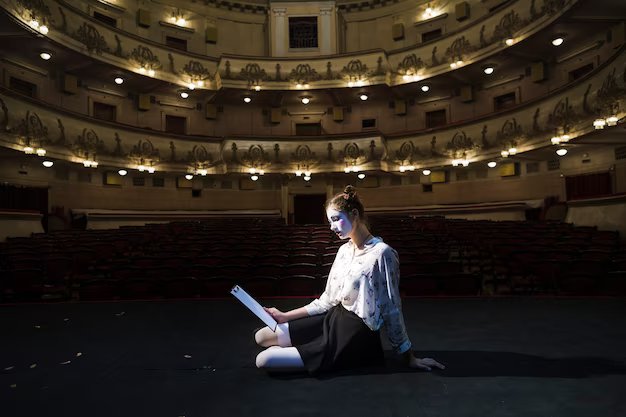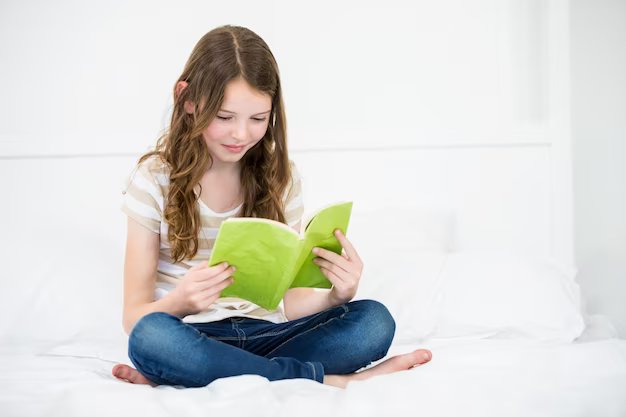
Theatre is the ultimate immersive art form, targeting multiple senses simultaneously, children, like adults, generally have different learning strengths.
Our programs are modelled on the practice of Theatre in Education (TIE), supporting cyber safety education, anti bullying and social and emotional learning through live productions for schools.
Theatre in education is the use of theatre for purposes beyond entertainment. It involves trained actors/educators performing theatre for students or communities, with the intention of changing knowledge, attitudes andbehaviour.

A famous Chinese proverb says, “Tell me and I will forget, show me and I may remember; involve me and I will understand.” The statement sums up the benefits of the modern teaching method that incorporates theatre in the classroom to promote student engagement and make learning memorable.
Theatre in education goes beyond entertainment because it creates a creative environment that changes the student’s attitudes, behaviour, and knowledge. The importance of theatre in education is evident in how it creates a holistic learning environment that develops students emotionally, intellectually, socially, and physically.
Globally, schools recognise drama and art as some of the best ways to promote emotional intelligence and impart soft skills to youngsters. These skills are difficult to provide in a traditional education system.
Self-Confidence: : Taking risks in class and performing for an audience teach students to their trust idea send abilities. This confidence will apply in nearly every aspect of their future.
Imagination: : In a word addicted to technology, theatre provides an outlet for making creative choices,thinking new ideas, and interpreting the material in expressive ways that are the essence of drama.
Empathy & Tolerance: Acting roles from different situations, time periods, and culture promotes compassion and tolerance for others.
Cooperation/Collaboration: Theatre combines the creative ideas and abilities fromit participants.
Concentration: Playing, practicing, and performing develop a sustained focus on mind,body, and voice which helps with other areas of life including school.
Fun: Theatre brings play, humor, and laughter to learning; this improves motivation and reduces stress.
Communication Skills: Drama enhances verbal and nonverbal expression of ideas. It improves voice projection, articulation, fluency of language, and persuasive speech.
Problem Solving: Students learn to communicate the who, what, where, when, and why to the audience. Improvisation fosters quick-thinking solutions, which leads to greater adaptability in life.
Trust: The social interaction and risk taking in drama develop trust in self, others, and the process.
Memory: Rehearsing and performing the words, movements, and cues strengthen this skill like a muscle.
Social Awareness: Legends, myths, poems, stories, and plays used in drama teach students about social issues and conflicts from cultures past, present, all over the world.
9 VALUABLE LIFE SKILLS FOR CHILDREN TO LEARN
1
A person having Empathy will handle a situation with grace and sensitivity.
2
A person having Empathy will handle a situation with grace and sensitivity.
3
A person having Empathy will handle a situation with grace and sensitivity.
4
A person having Empathy will handle a situation with grace and sensitivity.
5
A person having Empathy will handle a situation with grace and sensitivity.
6
A person having Empathy will handle a situation with grace and sensitivity.
7
A person having Empathy will handle a situation with grace and sensitivity.
8
A person having Empathy will handle a situation with grace and sensitivity.
9
A person having Empathy will handle a situation with grace and sensitivity.
The basic course structure shall focus upon improving the holistic personality of the student which includes body and voice and how they could be used as effective tools. The course shall be imparted in such a manner that it not merely deals with the specifics of theatre and its nuances instead it also caters to the overall development of the student Viz a Viz society and coexistence with it by applying theatre to the practical necessities. It shall also be the intention to enhance the creative and organic abilities of the students thereby making them efficient in multiple vocations where creative addition is required or expected. The course shall make certain that it comprises of physical and theoretical sessions, both, and thus encouraging participation and building from the student’s side instead of the instructor’s more.

Our basic work relates to ‘how not to act’. Acting is the only aspect which we, on purpose, don’t teach. Our method deals with one basic principal where in acting only start when the preparation is not enough. Acting is short lived. Living the character is immortal. Believe in process. Becoming a good actor then merely becomes a logical outcome of the preparation.
1 Knowing self and the world around (2 sessions)
This includes
various exercises of emotional understanding, participation in
diluting inhibitions, breaking myths and boundaries, usage of space,
questioning the obvious etc. A lot of interactive exercises are to
be expected in this section.
First session shall include the exercises related to discussions, parenting and troubles and happiness. Second sessions shall have revisiting past, exercises related to scene making utilizing space, and going to the future and making future as wanted.


2 Voice (2 Sessions)
This includes exercises related to modulation, intonation,
projection and pronunciation. To make student understand how voice
could be utilized as an effective tool mechanism in development of
the self beyond acting and theatre. The module shall comprise of
techniques and exercises to harness the inner ability of voice,
understanding breath and rhythm, its craft and how to use it in the
practical world and on stage. First session shall include the
understanding of modulation, intonation, projection and
pronunciation where students shall be taught the rhythm of voice,
how to speak according to the subject, the distance and nearness
between the subject and object. Second session shall include
pronunciation. It shall include reading texts with modulated voice,
reading in the character and technical exercises to make the
pronunciation of Urdu words and Hindi words proper, removing Mother
Tongue Influence (MTI) as well. The third session shall include the
importance of breathing while speaking or delivering lines. A little
bit of breathing exercises shall be introduced which students can
practice on their own. Also, elements of breathing like ‘sigh’ ,
silence etc shall also be introduced and the students would be told
how exactly they too are important tools of communication.
3 Body (2 Sessions)
A lot of physicality to be expected in to this section. Students
would be asked to know their body, shall be told to listen to it and
thereby deal with it. The idea is to make students understand that
body too has a paradigm and there is a specific requirement of
everything in a human body. Thus, students shall be made to
understand the importance of correct posture, emotional posture,
body language and how to control body according to the characters
given and situations under with. The first session shall include and
shall tell students what is body, what is posture, correctness of
walking and importantly what is the role of a spine. They would also
be told about how exactly ‘body language’ contributes in
communication. There would be certain exercises which would deal
with communicating certain basic emotions in daily life. The second
session shall purely deal with dealing with the body in characters.
The students would be given certain characters to play where they
would be exhibiting them by the means of their body. This shall
enable students to utilize body according to the character.

4 Character is action (1 session)
This section shall deal with
understanding of living and stage characters present. It shall enhance
observation, empathy, connection and social cohesion of the student.
The section shall include the importance of memories in building a
character, exercises which shall develop the understanding of primary
emotions like happiness and sadness which otherwise are not logically
connected to us there by enhancing the social embracing in a better
manner. The session shall talk about the emotional and sense memories
where by enabling the students to build character piece by piece. The
session shall also encourage students to the background, foreground,
part and future of the character. This session shall also have
exercises to put character into ‘conflict’ whereby students shall
understand the ‘realism’in character beyond the script.

5 Understanding of Space (1 Session)
This section shall deal with the understanding and acceptance of
space. The section shall deal with telling students how space around
is important for existence and how it could be used for better
understanding of the real world. It shall include space of illusion,
space of reality, space unimagined.
This session shall speak basically about time and space and how exactly characters change according to it. For example, how does the same person behave during an interview as compared to be in a cinema hall. The session shall basically deal with training them th of students to know their emotional identity and shall have exercises to know exactly why do different people behave in different manners despite they are in same time and space
6 Imagination (Half A Session)
This section, being one of the most important sections, shall
include enhancing the imaginative ability of the student which
therefore works in designing and creation of the new. The module
shall deal with exercises dealing with creating best out of waste,
dealing with objects, humans and nature. It shall also include
exercises which shall encourage students to participate in
building/adding to the already established. The focus shall be upon
to see beyond the obvious and thus understanding the viability of
everything around, seen or unseen.
7 The Power of a Beautiful Mind (Half A Session)
This session shall deal with the basic understanding that everything
which was once created or has been there is a direct consequence of
a beautiful mind. The session shall focus upon the cleansing of
thoughts and direct them to positive creation so as to enhance the
student to add on to the beautification of the already established
natural and spatial realms in this world. This session shall be
spiritual yet pragmatic, theoretical yet participatory and active in
nature.
Sections 6 and 7 shall be clubbed together for one
session and shall have basic exercises to harness imagination where
particularly they shall be asked to read more. There would be
exercises which shall deal with storytelling, improvisation
exercises and scene making exercises etc. It shall basically tell
students how exactly imagination is not away from reality and how it
is different from fantasy. The session shall also deal with
exercises where students shall understand to build a story, script
upon a premise and how exactly the story shall travel to unseen and
unknown events and circumstances.


Target audience: 8 -12 year olds
Theme: Bullying
Story line: A group of friends are being bullied by a new student at school. The friends band together to stand up to the bully, and they eventually learn to overcome their fear and standup for themselves.
Characters: The friends, the bully, the school principal, and the parents of the friends.
Scenes: The friends are first introduced, and they are shown to be happy and carefree.The bully arrives at school, and he immediately starts to pick on the friends. The friends are scared and don't know what to do. They eventually decide to stand up to the bully, and they are successful in getting him to stop. The friends learn that they are stronger together,and they are able to overcome their fear.
Interactive activities: The audience will be invited to participate in a variety of activities,such as role-playing, discussion, and creative writing. These activities will help the students to learn about the issue of bullying and to develop strategies for dealing with it.






1
2
3
4
5
6
7
8
9
10
11
12

Total Duration : 30 hours
Class duration : 1.5 hours
Class Schedule : 3 classes in a week
Minimum batch size : 10 students
Total Course fee : ₹ 45000/-